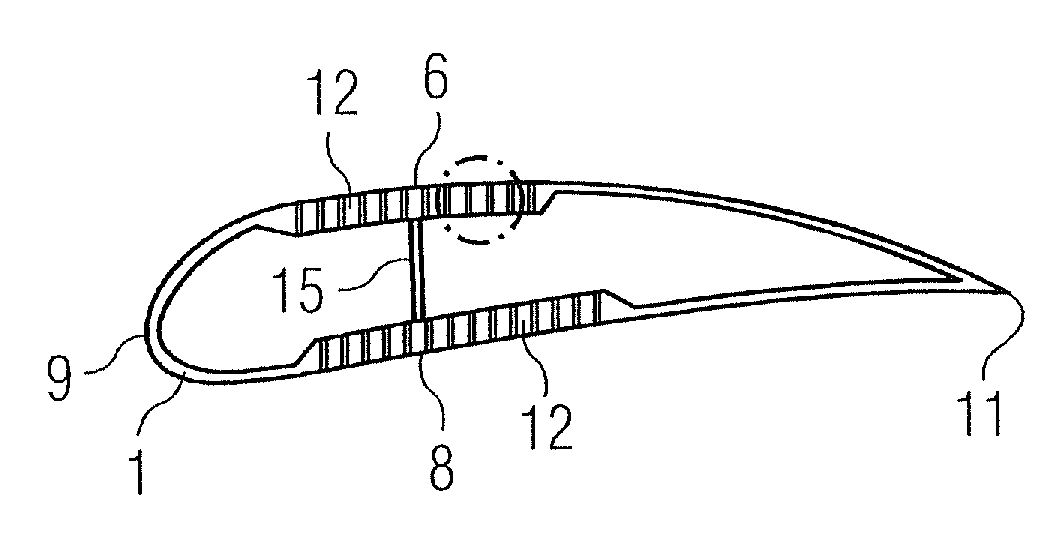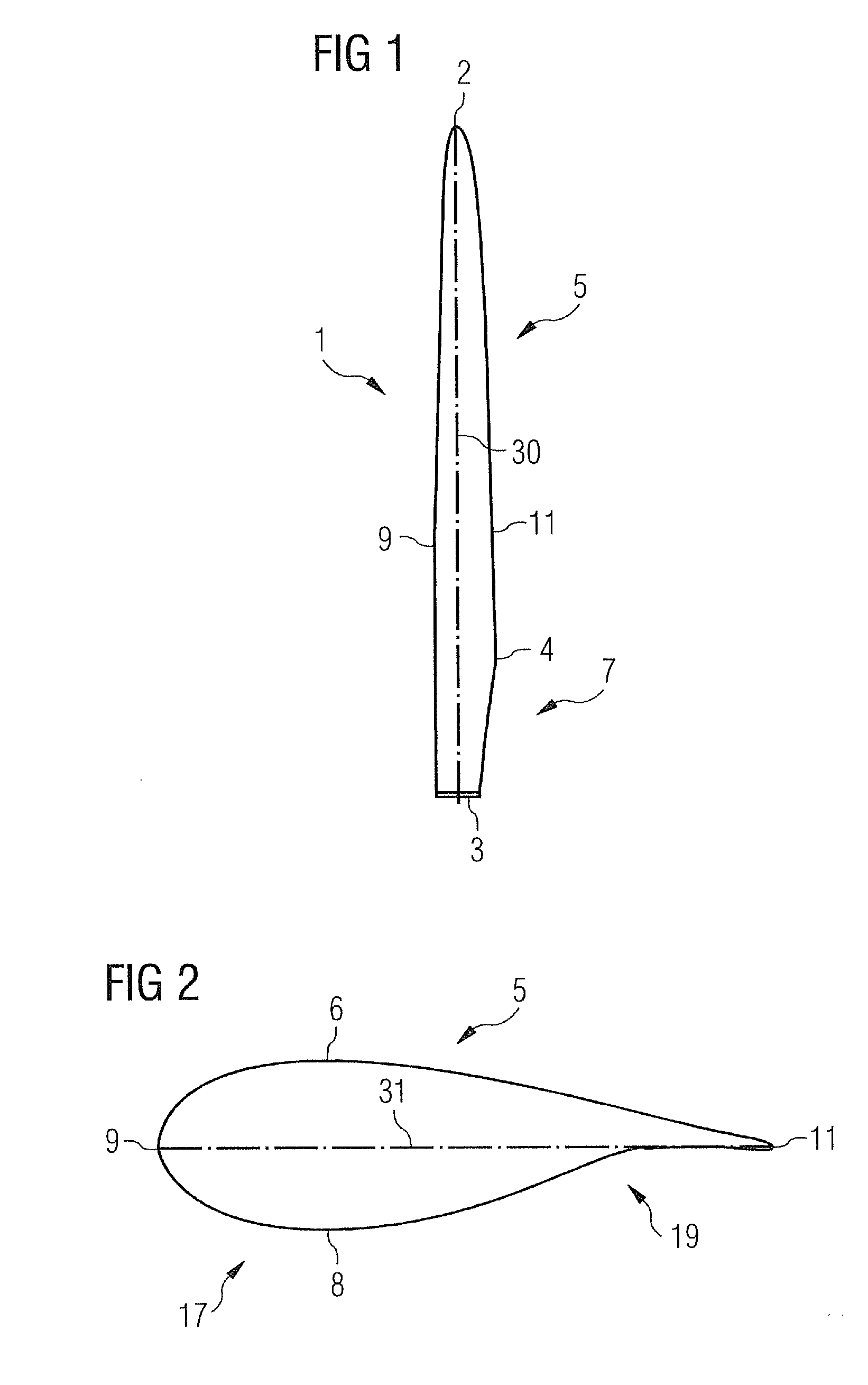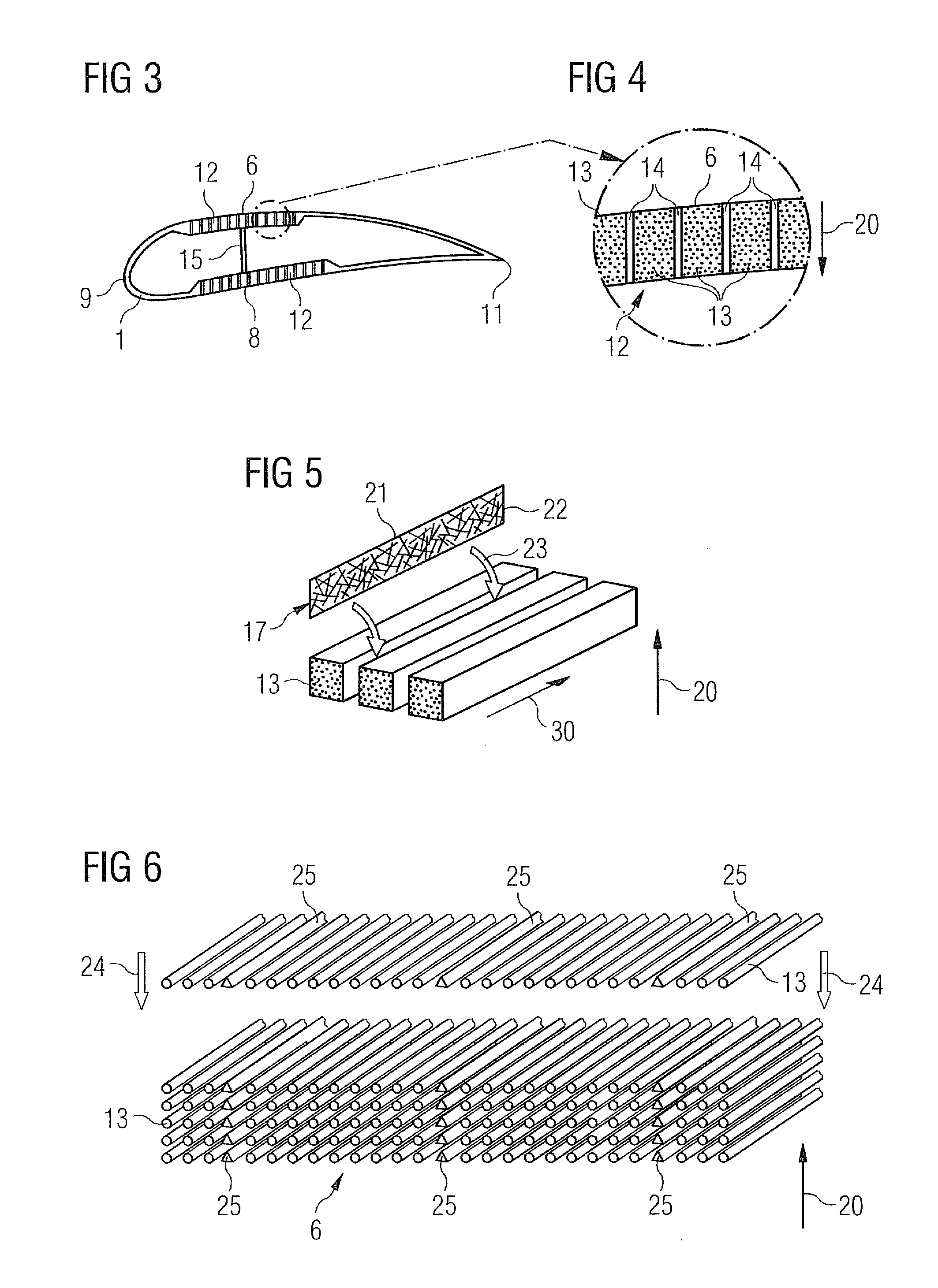Method for manufacturing a work piece by vacuum assisted resin transfer moulding
a technology of vacuum assisted resin and manufacturing method, which is applied in the manufacture of final products, machines/engines, weaving, etc., can solve the problems of inherited expensive textile machinery used in weaving fabrication, and achieve the effect of reducing the cost of work pieces
- Summary
- Abstract
- Description
- Claims
- Application Information
AI Technical Summary
Benefits of technology
Problems solved by technology
Method used
Image
Examples
Embodiment Construction
[0034]Embodiments of the present invention will now be described with reference to FIGS. 1 to 9.
[0035]FIG. 1 shows a rotor blade in a plan view on the plane defined by the blade's span and the blade's chord. The span direction is indicated by reference numeral 30. The rotor blade 1 shown in FIG. 1 comprises a root portion 3 with a cylindrical profile and a tip 2. The tip forms the outermost part of the blade. The cylindrical profile of the root portion 3 serves to fix the blade to a bearing of a rotor hub. The rotor blade 1 further comprises a so-called shoulder 4 which is defined as the location of its maximum profile depth, i.e. the maximum chord length of the blade. Between the shoulder 4 and the tip 2 an airfoil portion 5 extends which has an aerodynamically shaped profile. Between the shoulder 4 and the cylindrical root portion 3, a transition portion 7 extends in which a transition takes place from the aerodynamic profile of the airfoil portion 5 to the cylindrical profile of ...
PUM
| Property | Measurement | Unit |
|---|---|---|
| distances | aaaaa | aaaaa |
| size | aaaaa | aaaaa |
| stiffness | aaaaa | aaaaa |
Abstract
Description
Claims
Application Information
 Login to View More
Login to View More - R&D
- Intellectual Property
- Life Sciences
- Materials
- Tech Scout
- Unparalleled Data Quality
- Higher Quality Content
- 60% Fewer Hallucinations
Browse by: Latest US Patents, China's latest patents, Technical Efficacy Thesaurus, Application Domain, Technology Topic, Popular Technical Reports.
© 2025 PatSnap. All rights reserved.Legal|Privacy policy|Modern Slavery Act Transparency Statement|Sitemap|About US| Contact US: help@patsnap.com



